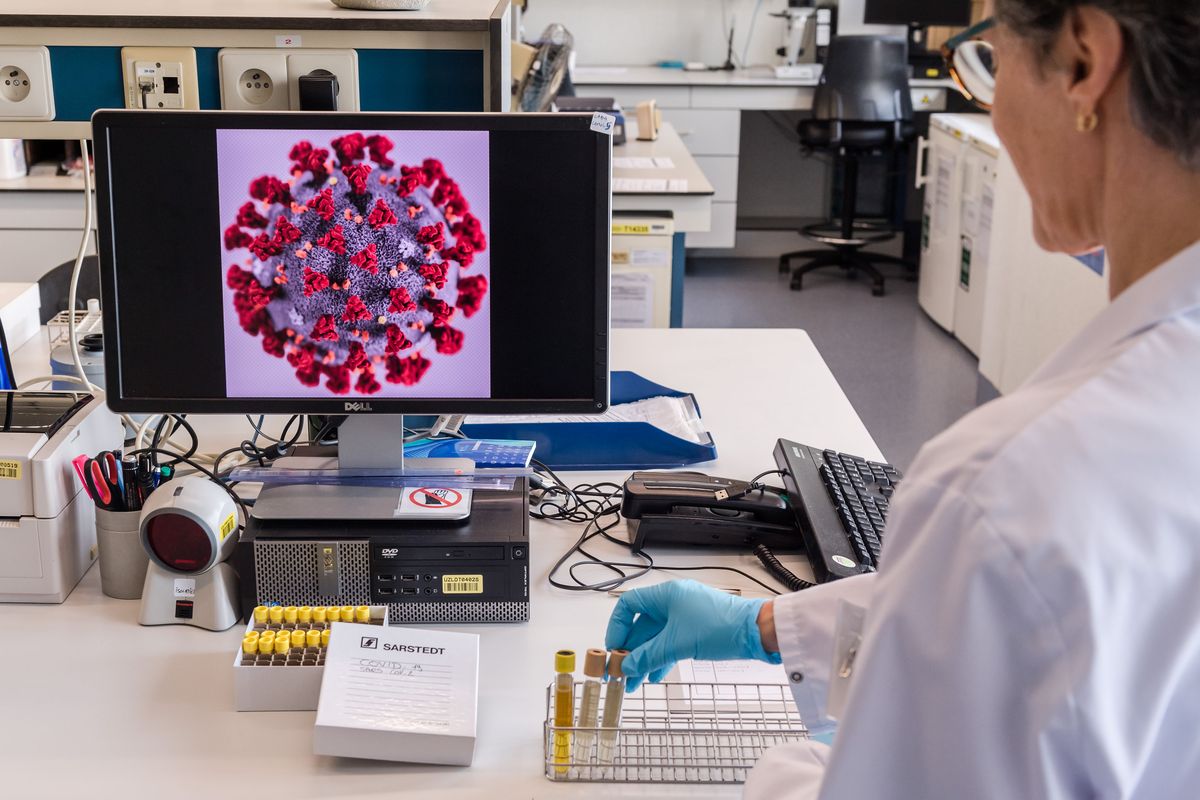Since early in the Covid-19 pandemic, would-be prophets (most of them not infectious-disease epidemiologists) have been predicting that it would soon burn itself out as people recovered from the disease and developed immunity. So far they have been proved wrong again and again as temporary declines in new infections gave way to second and third waves.
Still, even infectious-disease epidemiologists agree that there is a point at which widespread immunity to a disease can cause it to decline or even disappear. This “herd immunity” threshold is calculated in its simplest form as a function of a disease’s basic reproduction number, R0, which is how many additional people each person with the disease can be expected to infect (in a population with no previous immunity that makes no behavioral changes in response to the disease). In this equation, the share of the population that needs to be immune to achieve herd immunity is 1 – 1/R0.
The U.S. Centers for Disease Control and Prevention has estimated Covid-19’s R0 at 2.5, its German equivalent, the Robert Koch Institute, goes with a range of 2.8 to 3.8. Other estimates out there mostly land between two and four. So let’s say three, which works out to a herd immunity threshold of 67%.
A bit more than a quarter of the U.S. population has been infected so far with the SARS-CoV-2 virus that causes Covid-19, according to estimates from the CDC, data scientist Youyang Gu and a team from the Harvard and Yale schools of public health. That’s still a long way from 67%, but throw in vaccines and it can be tempting to start charting an end to the pandemic. In November, in the immediate wake of the spectacular vaccine-trial news from BioNTech SE and Pfizer Inc. and Moderna Inc., I speculated that vaccinating not much more than 40% of the U.S. population might be enough to get the U.S. to herd immunity.
That is, I’m afraid, starting to look like yet another bad forecast by a would-be prophet who isn’t an infectious-disease epidemiologist. The vaccine news has just kept getting better since then, with 8% of the U.S. population vaccinated so far with at least one shot from BioNTech-Pfizer or Moderna, and vaccines from the University of Oxford and AstraZeneca Plc, Novavax Inc., Johnson & Johnson and the Russian health ministry also shown to be effective in clinical trials. But the herd-immunity math for vaccines is more daunting than I realized, plus it’s not just the vaccine makers who have been busy, with SARS-CoV-2 also hard at work mutating into new, harder-to-stop variants.
The vaccine-math complication is that the trials mainly measure how effective they are against Covid-19 symptoms, not Covid infections and transmission. Scientists are confident that the vaccines do offer protection against infection too, but it’s probably not on the level of the 94%-95% effectiveness against symptoms that the BioNTech-Pfizer and Moderna vaccines have demonstrated. On the basis of partial data available on the Oxford-AstraZeneca and Moderna vaccines and his experience with other diseases, epidemiologist Marc Lipsitch, director of the Center for Communicable Disease Dynamics at Harvard’s T.H. Chan School of Public Health, estimated in December that they’re likely to be 50% to 70% effective against transmission. That’s still the range Lipsitch is going with now, he confirmed to me by email, although he’s increasingly hopeful that the effectiveness will be higher for younger vaccine recipients.
To find the percentage of the population who would need to be vaccinated to achieve herd immunity, one multiplies the inverse (1/x) of the vaccine effectiveness times the herd immunity threshold. At 50% to 70% effectiveness and a herd immunity threshold of 67%, that comes out to a range of 96% to 134%, or implausible to impossible. This doesn’t count people who’ve already had Covid-19, but most indications are that infection-acquired immunity is if anything less powerful and lasting than the vaccine-derived kind, so the problem remains the same.
Then there are the mutations. The British one that apparently caused an explosion of cases in the U.K. in December and may soon do the same in the U.S. has a reproduction number 1.4 to 1.8 times that of the previously dominant Covid-19 variant, estimated a team of researchers from Imperial College London’s MRC Centre for Global Infectious Disease Analysis. That implies a new R0 of 4.2 to 5.4 and a herd immunity threshold of 76% to 82%, which couldn’t be reached even at 100% vaccination or infection unless the vaccines and/or previous infections were at least 76% effective at preventing new infections.



